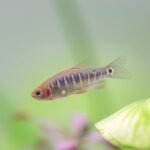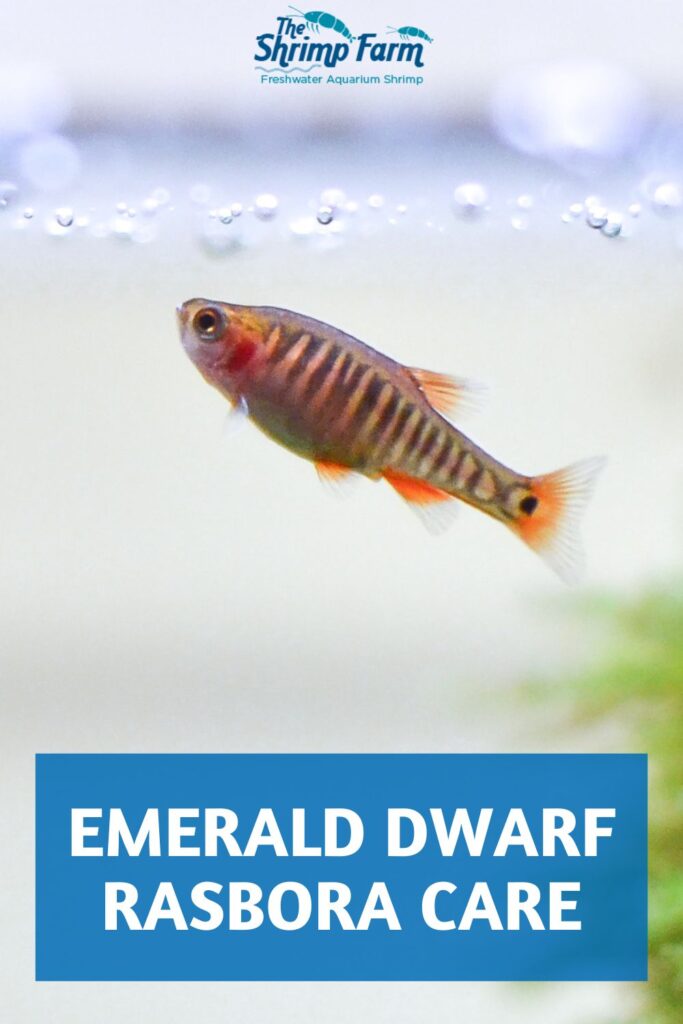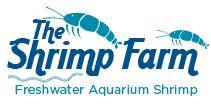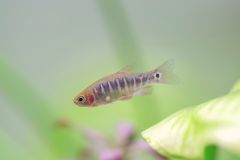Emerald Dwarf Rasbora Care & Info
Looking for a small, colorful schooling fish to add to your aquarium? Allow us to present our suggestion: the emerald dwarf rasbora. Despite its name, this tiny fish is actually a type of Danio, and it's the perfect addition to a small (shrimp) aquarium.
Keep reading to find out everything you need to know about the emerald dwarf rasbora and what it needs to thrive in your tank!
| Scientific name | Danio erythromicron, syn. Celestichthys erythromicron |
| Common names | Emerald dwarf rasbora, emerald dwarf danio |
| Difficulty level | Easy |
| Origin | Myanmar |
Table of Contents
Emerald dwarf rasbora appearance & natural habitat
Appearance
How gorgeous is this little Danio?! Ever since its discovery in 2006, its cousin the galaxy rasbora tends to get all the attention, but we'd say the emerald dwarf rasbora is just as deserving of our appreciation.
At a maximum size of just over an inch, this is decidedly a microfish. It can be told apart from other Danios by its pattern of dark blueish vertical bars across a tan-colored body, which is especially pronounced in males. The fins are orange and the fish sport a black dot right at the base of their tail.
Did you know? The emerald dwarf rasbora was first discovered in 1918. It was long considered a member of the genus Microrasbora, which explains its confusing common name. The first study suggesting it's actually a Danio appeared in 1999, but the official move wasn't made until 2007, based on molecular research.
Natural habitat
The emerald dwarf rasbora is naturally found in a single lake in the Southeast Asian country of Myanmar (formerly known as Burma). Lake Inle is the second-largest lake in the country. Although it's large, it's not very deep, reaching no more than around 17 feet in depth even in the rainy season. It's situated at a relatively high altitude: around 2,900 feet.
Emerald dwarf rasboras can mostly be found around the edges of Lake Inle, where plenty of aquatic plants are present and the water is shallow. They form groups, but are not tight schoolers.
In the wild, Danio erythromicron is considered an Endangered species by the IUCN Red List. This is because unfortunately, Lake Inle is under pressure due to human activity. Non-native fish species have been introduced, and (agricultural) pollution is a serious threat.
Setting up an emerald dwarf rasbora aquarium
Requirements
If you'd like to keep a group of emerald dwarf rasboras, a 15-gallon long aquarium is a good place to start. Remember: despite their size, these fish are very active! The males also get a bit aggressive towards their own species during spawning time, so it's just a good idea to give everyone their space.
This is a pretty timid species. As mentioned, in its natural habitat it particularly likes areas with lots of vegetation. In the aquarium, something similar would be great! You'll see your fish more if they feel secure.
Plenty of live plants, relatively dim lighting, and a dark substrate are probably best to prevent stressing these Danios out. Keep the filter flow nice and mellow.
Water parameters
Although these fish aren't known to be particularly sensitive, as always, the aquarium should be fully cycled before introducing any livestock. You should perform weekly small water changes with temperature-matched water and keep a regular eye on the water quality using a liquid water test kit.
One thing that's important to remember is that Lake Inle, where these fish are naturally found, is located on limestone. This means the water is naturally slightly alkaline, so emerald dwarf rasboras aren't suitable for aquariums with acidic water.
Additionally, remember that Inle is located at a relatively high altitude. As a result, the water usually isn't that warm.
pH: 7-8
Temperature: 68°-76° F
Hardness: 200-350 ppm
Tankmates
Danios like this species may not school very tightly, but they are still decidedly group fish. Don't keep them alone; get as many as your tank size allows! It helps your fish feel safe and also aids in dispersing territorial aggression from the males.
As for other tankmates, because emerald dwarf rasboras are pretty shy, it's best not to combine them with overly boisterous fish. They play nice and will probably shoal with other small schooling species that like similar water values, such as other Danios, Microdevario, and Microrasbora. White cloud mountain minnows (Tanichthys albonubes) should also work well.
As for non-minnow options, you could try panda Corydoras, bristlenose Plecos, cherry barbs, or Yunnanilus loaches.
Fellow shrimp enthusiasts will be happy to hear that yes, you can keep emerald dwarf rasboras with shrimp. They will eat baby shrimp if given the chance, but if you pick a fast-breeding type like Neocaridina (or one that doesn't reproduce in the aquarium, such as Amano shrimp) and the aquarium is densely planted, you should be fine.
If you want to try other invertebrates, emerald dwarf rasboras also go well with dwarf crayfish and aquatic snails.
Emerald dwarf rasbora diet
These Danios are omnivores. In the wild, they eat small bugs, algae, and pretty much anything else they can find. For the best results and a long lifespan, you should feed yours a varied diet in the aquarium.
Small sinking pellets or flakes will work well, but frozen foods or even live foods will be hugely appreciated. It's loads of fun seeing your emerald dwarf rasboras going crazy trying to catch a batch of Artemia or Daphnia!
Breeding emerald dwarf rasbora
The emerald dwarf rasbora is not considered a difficult fish to breed. That's good news for the wild population, as most fish you'll find for sale nowadays are tank-raised. If you want to breed yours, you can, although it's a little finicky because they're so small.
In densely planted tanks with healthy fish, you may find fry popping up without any intervention on your end. These Danios are egg scatterers that spawn and then ignore their eggs and babies (except maybe to eat them, which is common in aquarium fish).
If you want to give the fry a better chance of survival, you can set up a separate breeding and rearing tank. Fill it with Java moss and use water from the main tank. You can add a sponge filter as well. Release a conditioned pair (egg-laden female and male with breeding colors) in the tank and they should soon get going.
Once the eggs have been laid, you can put the adults back in their normal aquarium. The eggs will be stuck to the Java moss, where they will hatch in up to 3 days. You can start feeding the fry after 4-5 days using infusoria or microworms, later switching to baby brine shrimp.
Buying emerald dwarf rasbora
Emerald dwarf rasboras aren't quite as popular as some of their cousins, like zebra Danios and galaxy rasboras. Still, you should be able to find them in most specialized aquarium stores. At the very least, they should be able to order a batch in for you.
You can also opt to buy your rasboras online. The Shrimp Farm sells emerald dwarf rasboras in packs of 3 and ships them right to your doorstep with live arrival guarantee!



 Shrimp
Shrimp Fish
Fish Crab &
Crab & Plants
Plants Foods
Foods Snails
Snails


